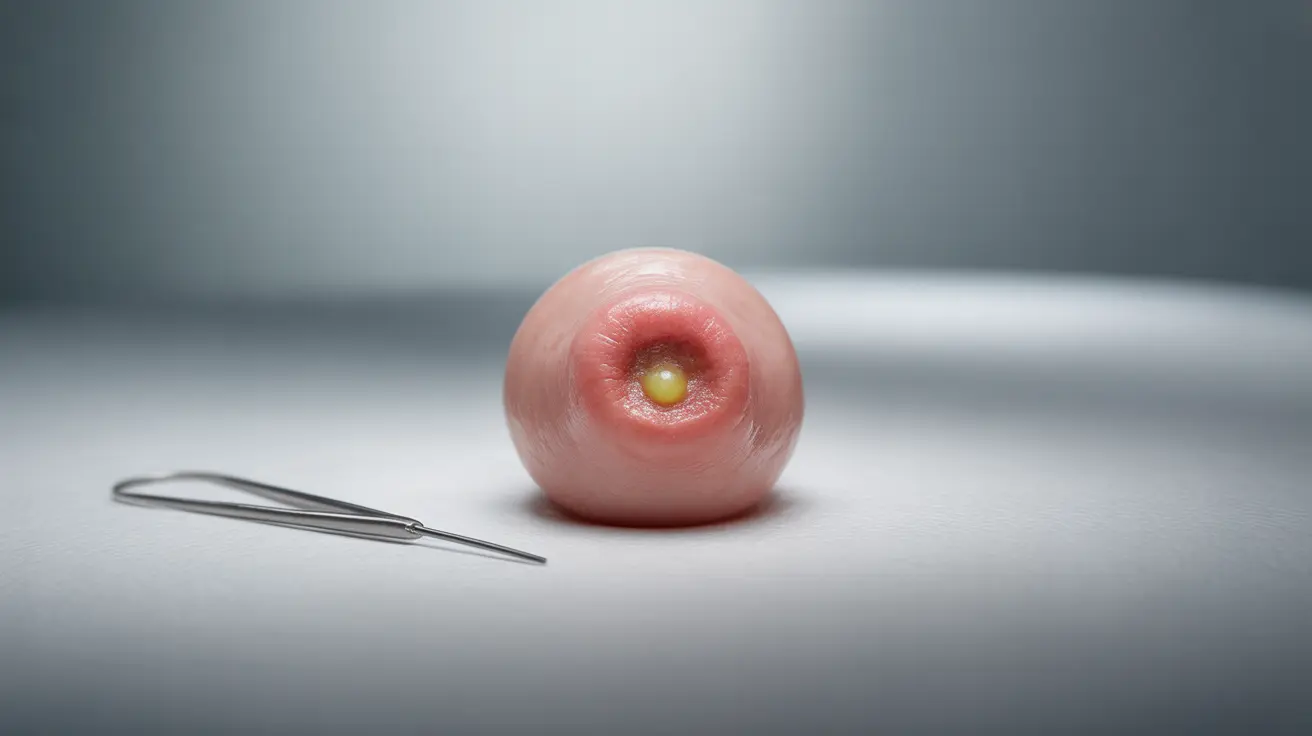Nipple piercings have become increasingly popular, but proper care and attention are essential to prevent complications. An infected nipple piercing can be both uncomfortable and potentially serious if not addressed promptly. Understanding the signs, treatments, and prevention methods is crucial for maintaining your piercing's health and your overall well-being.
This comprehensive guide will help you identify infection symptoms, learn proper treatment approaches, and understand when to seek professional medical care. We'll also address important considerations for those who are breastfeeding and provide essential aftercare tips to prevent complications.
Signs and Symptoms of an Infected Nipple Piercing
While some discomfort is normal during the healing process, certain symptoms clearly indicate an infection that requires attention:
- Severe or increasing pain
- Unusual or excessive swelling
- Green or yellow discharge
- Foul odor
- Redness that spreads beyond the piercing site
- Warm or hot sensation around the piercing
- Fever or chills
It's important to distinguish between normal healing reactions and genuine infection symptoms. During normal healing, you might experience mild soreness, light pink or red coloring around the piercing, and clear discharge. However, if symptoms worsen or persist beyond a few days, an infection may be present.
Treatment Options for Infected Nipple Piercings
At-Home Care
If you notice early signs of infection, you can try these initial treatment steps:
- Clean the area with sterile saline solution 2-3 times daily
- Apply warm compresses to reduce swelling
- Avoid touching the piercing with unwashed hands
- Wear clean, loose-fitting cotton clothing
However, if symptoms worsen or don't improve within 24-48 hours, professional medical attention is necessary.
Professional Medical Care
Seek immediate medical attention if you experience:
- Severe pain or swelling
- Fever or chills
- Spreading redness or warmth
- Thick, colored discharge
- Deep tissue involvement
Breastfeeding Considerations
Having a nipple piercing while breastfeeding presents unique challenges and risks. If you're currently breastfeeding or planning to breastfeed, consider these important factors:
- Increased infection risk due to bacterial exposure
- Potential interference with milk flow
- Risk of jewelry becoming a choking hazard
- Possible tissue damage affecting milk production
Jewelry Management During Infection
When dealing with an infected nipple piercing, the decision to remove jewelry should be made carefully. Generally, leaving the jewelry in place is recommended unless directed otherwise by a healthcare professional. Removing jewelry from an infected piercing can trap bacteria inside as the hole closes, potentially leading to an abscess.
Prevention and Aftercare Guidelines
Proper aftercare is crucial for preventing infections in nipple piercings:
- Use only sterile saline solution for cleaning
- Wash hands thoroughly before touching the piercing
- Avoid harsh soaps, alcohol, or hydrogen peroxide
- Keep the area dry after cleaning
- Avoid swimming pools and hot tubs during healing
- Wear clean, breathable clothing
Frequently Asked Questions
What are the typical symptoms of an infected nipple piercing and how do I distinguish it from normal irritation? An infected nipple piercing typically shows symptoms like severe pain, green or yellow discharge, spreading redness, and unusual swelling. Normal irritation usually involves mild soreness and clear discharge that improves over time.
How do I treat an infected nipple piercing at home, and when should I seek professional help? Treat minor infections at home with regular saline cleaning and warm compresses. Seek professional help if you develop fever, severe pain, spreading redness, or thick colored discharge that doesn't improve within 48 hours.
What are the risks and complications of having a nipple piercing while breastfeeding? Risks include increased infection potential, possible interference with milk flow, jewelry becoming a choking hazard, and potential damage to milk ducts. It's recommended to wait until after breastfeeding to get a nipple piercing.
Can I remove the jewelry from an infected nipple piercing, or is it best to leave it in? Generally, leave the jewelry in place unless directed otherwise by a healthcare professional. Removing jewelry can trap bacteria inside as the hole closes, potentially worsening the infection.
How can I prevent infections in new nipple piercings, and what are the best aftercare practices? Prevent infections by cleaning with sterile saline solution, maintaining good hand hygiene, avoiding harsh chemicals, keeping the area dry, and wearing clean, breathable clothing. Follow all aftercare instructions provided by your piercer.




